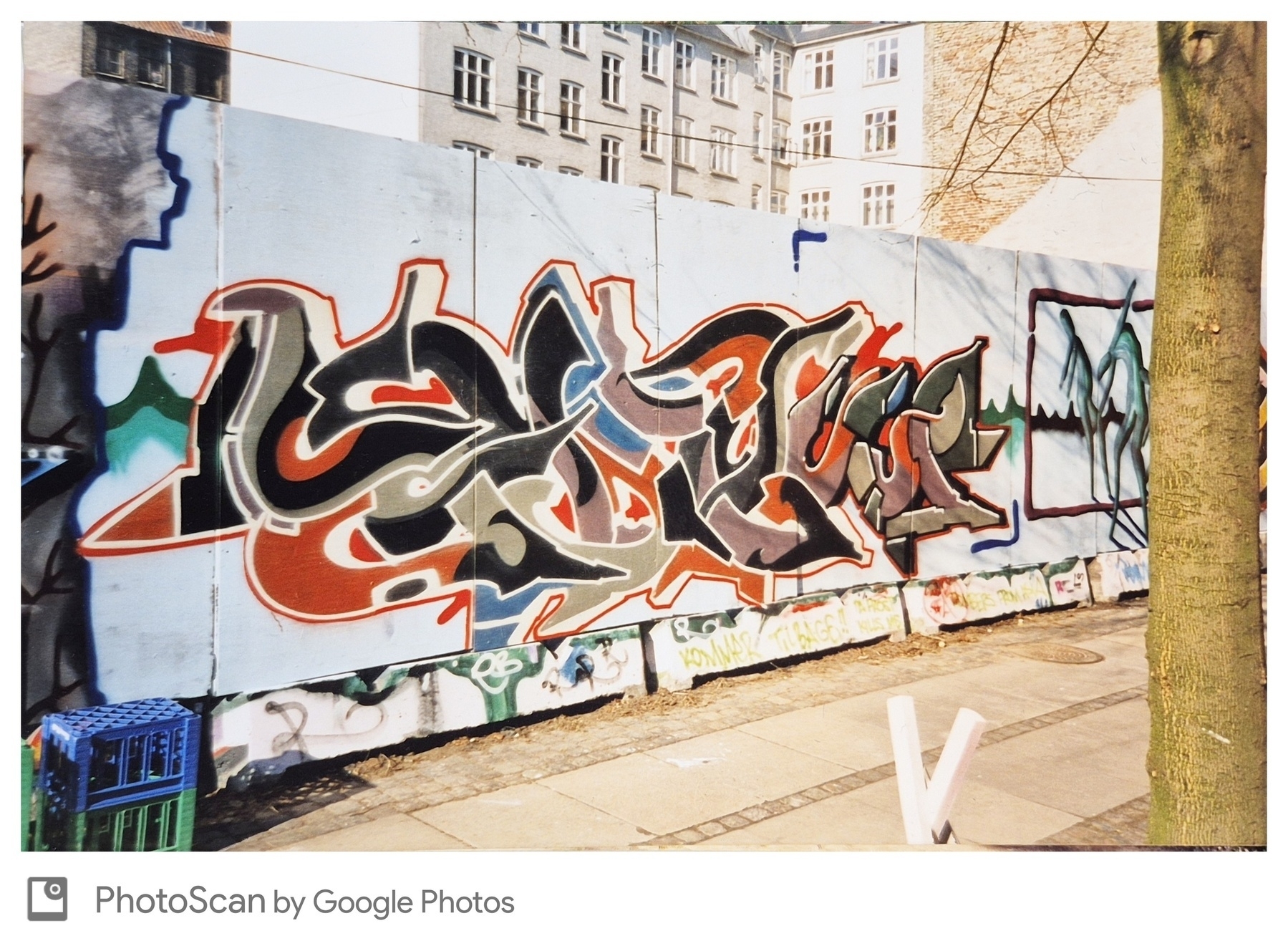In the 1990s, like most other writers in Denmark, my understanding of graffiti was built on fragments and misinterpretations. While a few writers had connections to the American scene through personal travel or direct correspondence, most of us worked from photos of photos, xeroxed magazines passed between crews, and blurry third-hand VHS tapes. We had all watched Style Wars - or rather, copies of copies of Style Wars, the images degrading with each generation until the pieces became abstract patterns of color and movement, their original structure almost impossible to discern. The pieces we painted were often clumsy and unbalanced compared to the sophisticated wild styles we had glimpsed through the static. Our letters were stiff and awkward, our proportions were wrong, and our color combinations sometimes jarred against each other. Limited access to spray paint meant working with whatever colors we could find, creating unexpected combinations that came from necessity rather than choice. We were interpreting copies of copies of copies, each generation of reproduction washing away more of the original logic and structure. In those constrained struggles with form, there was the beginning of something that might have become its own language, evolved from our specific conditions rather than following rules that had developed elsewhere. These crude attempts contained the seeds of what could have grown into distinct regional styles, if they’d had time to mature in isolation. Looking back now, I see those unpolished pieces as sketches for a possible future that never arrived - not the smooth perfection of imported knowledge, but something stranger and more specific to here. What felt like failure was actually the first stuttering words of a dialect that died before it could fully form. That clumsiness we were so eager to correct might have evolved into something entirely different from the styles we tried to copy - a path of development cut short once global communication and commercialisation made it easier to just do things the ‘right’ way. In our technical failures and misunderstanding lay the unrealized potential for a local visual syntax that will now never come to exist.
